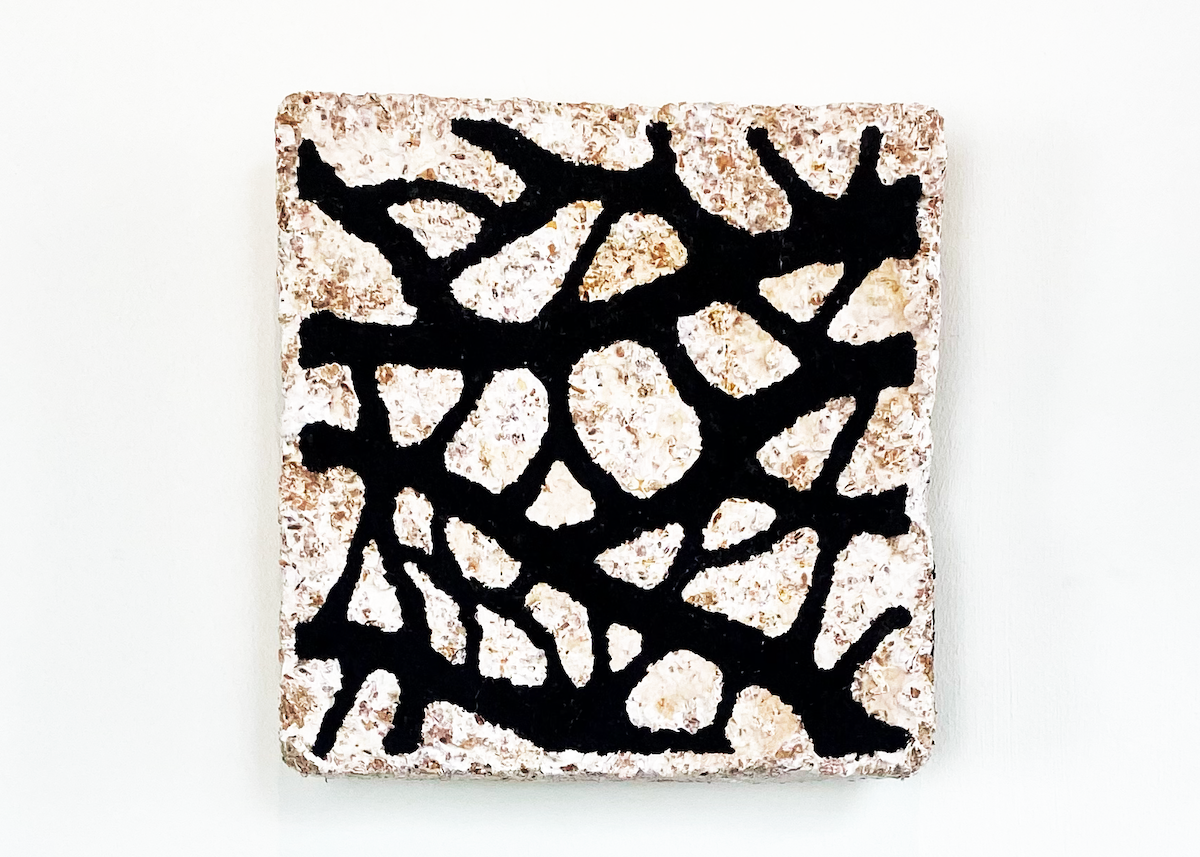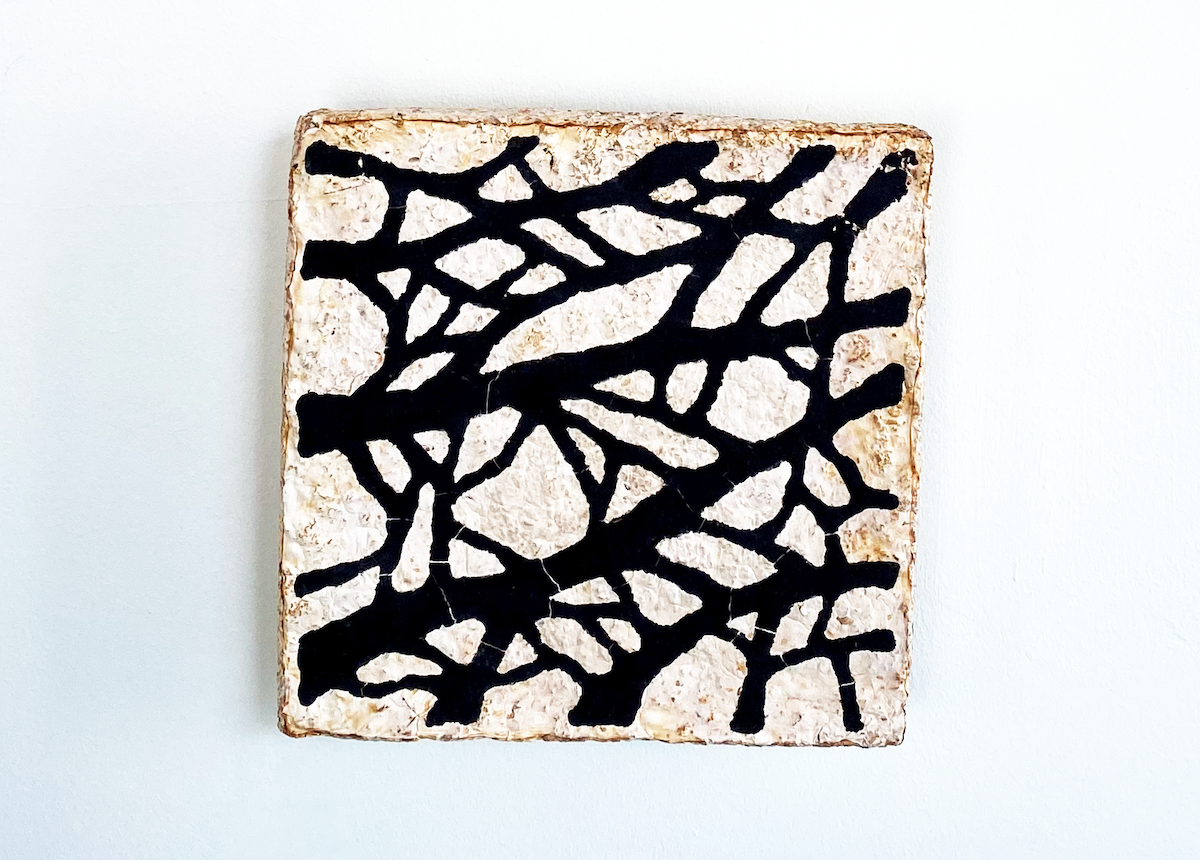

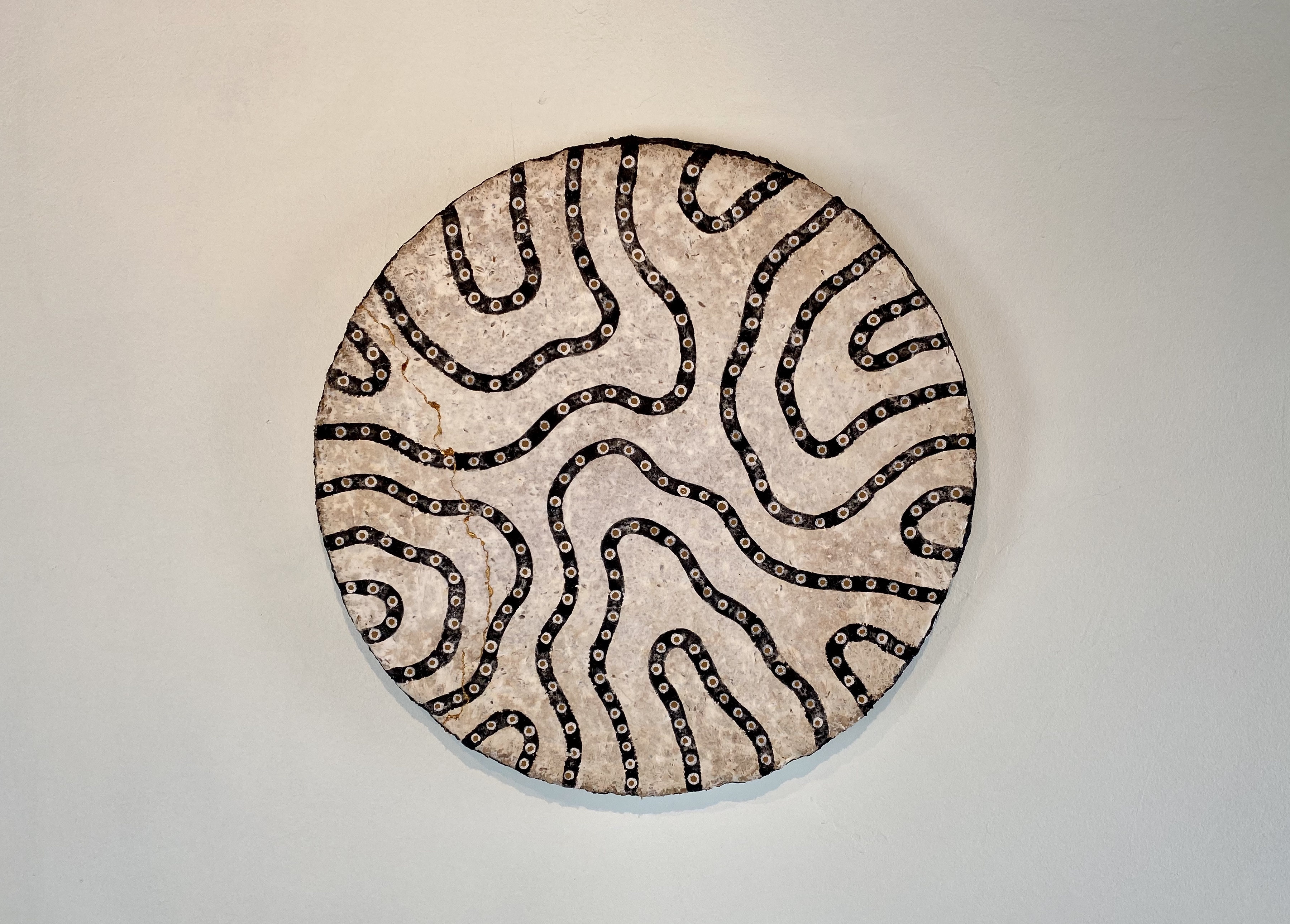
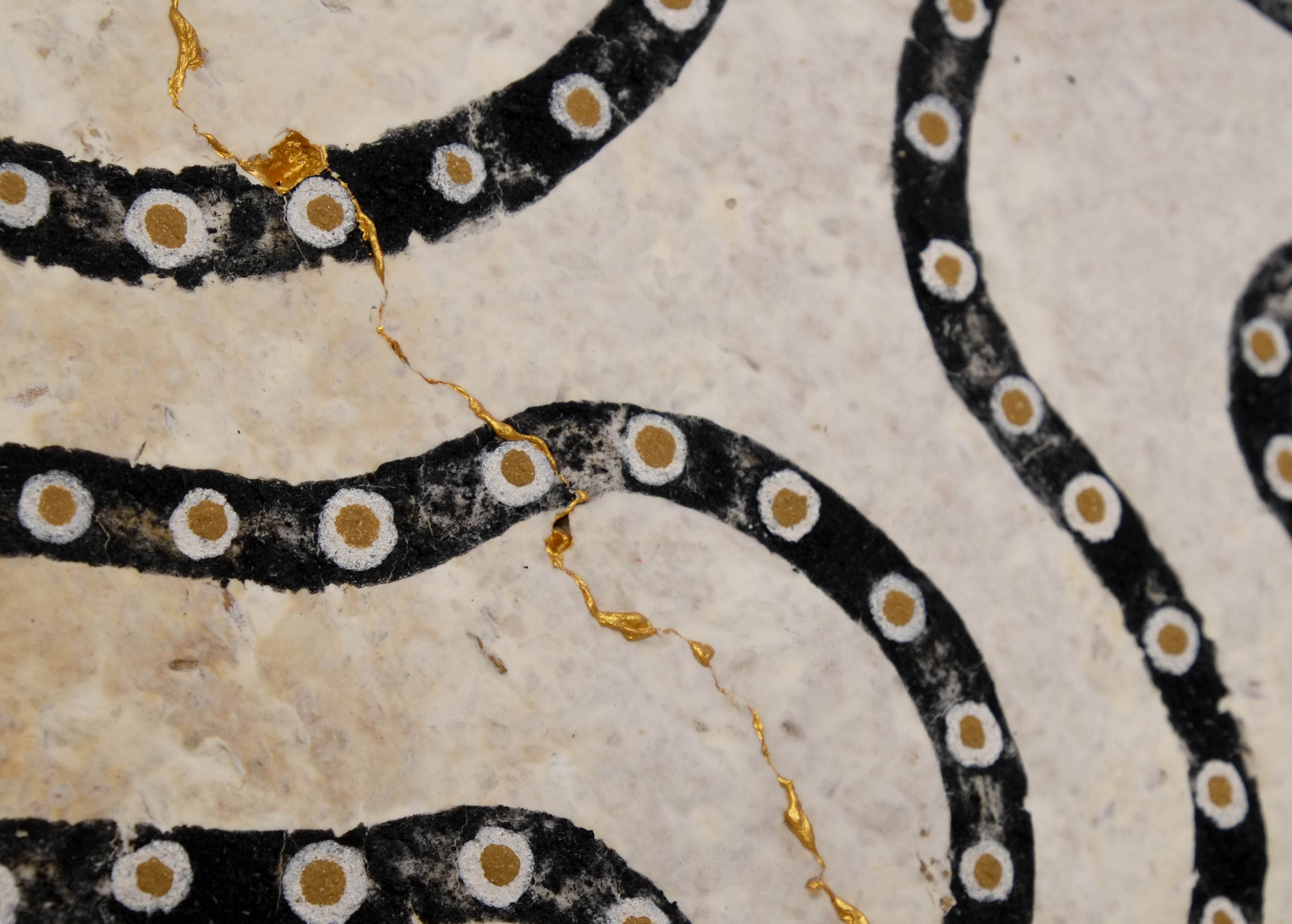
The mycelium canvases are painted with biodegradable paint with pigments from coal, inherited chalk from his grandfather, and yellow ochre found on a mountain near Volda in Norway. The two square pieces are inspired by macro images of mycelial growth. The larger, circular piece is inspired by tribal art and contour lines symbolising the earth and the magical mystery of existence.
There was a crack in the canvas which has been repaired, inspired by Kintsugi – The old Japanese tradition of mending broken ceramics with gold. The symbolism is as relevant today as it was centuries ago, reminding us that ‘the broken can be fixed‘ and to embrace our imperfections.
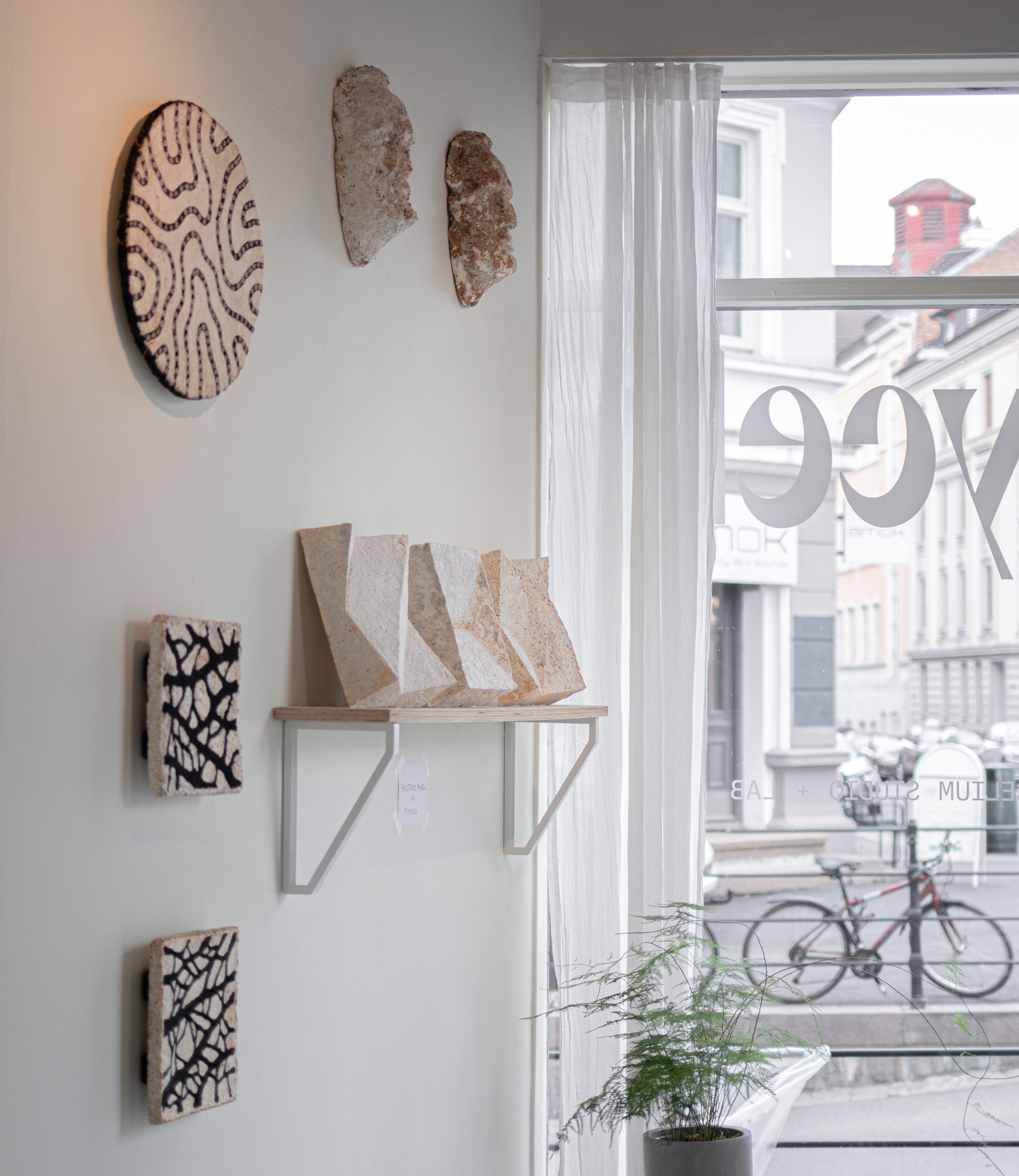
Experimenting with natural paint and pigments was something Mycela had wanted to test for a while. Nikolai already had experience making paints from natural resources and shares a lot of the same values and eagerness to explore new ways of expression. We were not sure how the mycelium canvas would react to the paint and if it would stick to the surface. Seeing that it was possible and being able to create a totally new expression, fusing new biotechnology with ancient painting techniques was a valuable discovery. The result was also
